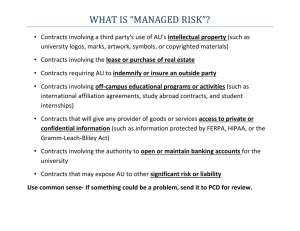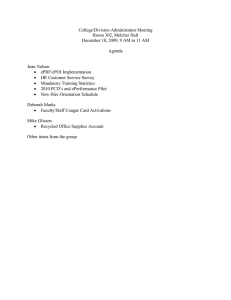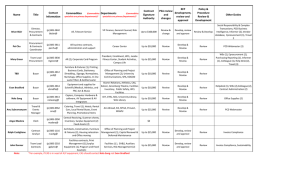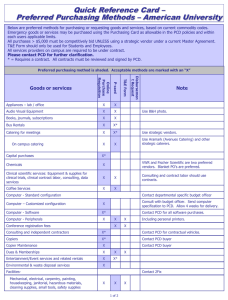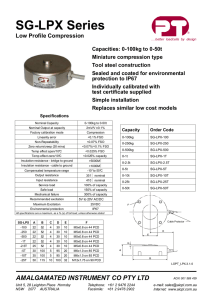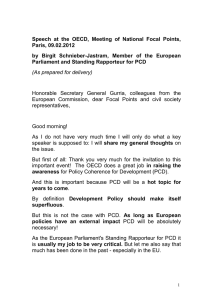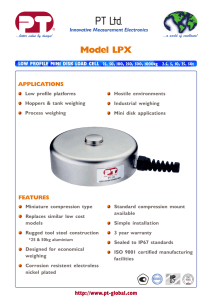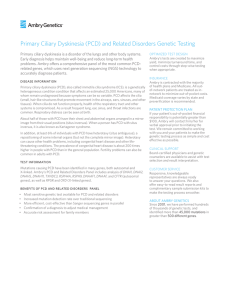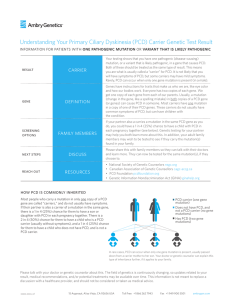Policy Coherence for Development: Recent Developments from a Donor Perspective
advertisement
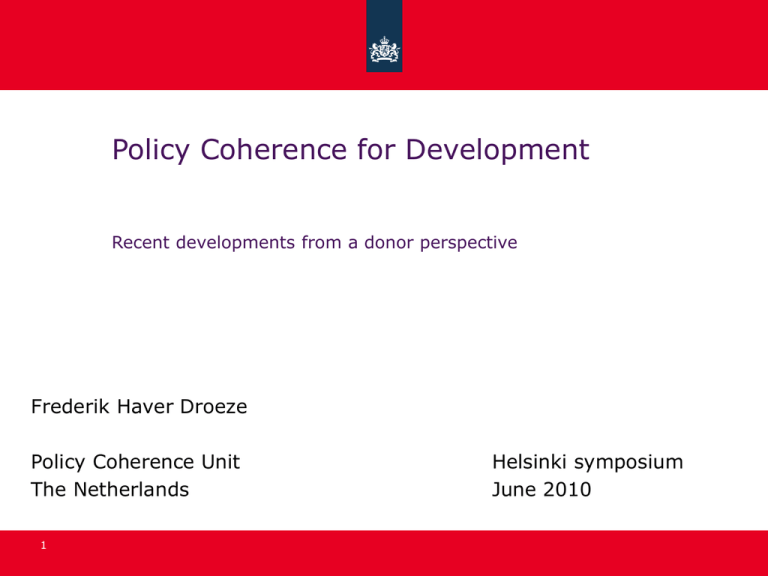
Policy Coherence for Development Recent developments from a donor perspective Frederik Haver Droeze Policy Coherence Unit The Netherlands 1 Helsinki symposium June 2010 The setting • Policy Coherence for Development (PCD) is increasingly seen as the key to modern development cooperation. • PCD is part of a search for a holistic approach to development and coherent global policies. • That wider policies matter is not a new insight, but the systematic translation into PCD has developed in the last 5 – 10 years. • The changing global setting has given a strong impetus: crises, growing interconnectedness, global public goods, G-20. • Non-aid policies have an enormous (underdeveloped) potential for contributing to the MDGs. 2 Specific PCD instruments have been introduced • Mechanisms developed in donor countries like the Netherlands whole-of-government approach, PCD Unit, reporting. • EU development consensus, biennial report, workprogramme, new PCD strategy with focus on five themes, report EP. • OECD MC declaration, synthesis report, good institutional practices, toolkit, DAC reflection exercise, flagship PCD report, development council. 3 Lessons learned (1) •PCD is about political choices. Political weight, public awareness, external pressure, financial power, all these matter more than formal structures. • Nevertheless mechanisms are needed: the general framework developed by ODI and OECD can help, but .. •Mechanisms need to be country-specific: no blueprints. 4 Lessons learned (2) • Difficult to make PCD operational and show results. • Lack of knowledge and focus are still major impediments. • Missing link with national strategies of developing countries, policy space is often the key. • PCD is not an alternative for aid. 5 Examples: success or failure? Doha development round Climate adaptation, the Copenhagen conference Duty free market access for least developed countires Agriculture, subsidies Security and development nexus, three D’s Intellectual property rights, the TRIPS+ agreement Debt restructuring arrangements Tax and illicit flows Migration 6 Challenges • Create commitment at the global level: monitoring of multilateral rulemaking, MDG8, role UN. • Highlight results and impact: developing indicators, accoutanbility. • Keep focus in a broader development policy. • Connect with the local and national level in developing countries. 7

